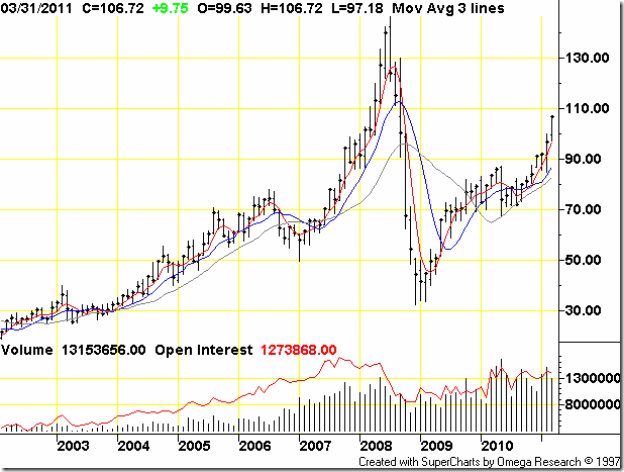With oil prices ruling above $100 per barrel, India’s trade deficit is widening and inflation remains a major concern. In this month’s guest post, Nishit looks at the implication of high oil prices for investors, and suggests how we can benefit from this adversity.
------------------------------------------------------------------------------------------------------------
From a low of about $33, Crude Oil has now spiralled up to a high of almost $110 a barrel. Crude Oil is the lubricant which runs the world, so let us investigate why the rise in price and what are its implications for India.
Most of the crude oil deposits lie in the Middle East. Middle East has been racked by turmoil and unrest. Supply of oil has been threatened in Libya and other parts like Saudi Arabia. The price rise has been mainly on the back of supply concerns.
India imports 70% of its oil, and if the price rises it implies that it would need to spend more dollars to buy the fuel. A country earns dollars by exports, inward remittances by Indians settled abroad and also foreign investments into India.
We spend the dollars on imports. The difference between exports and imports is known as Current Account Deficit. As we import more than we export, we are always in trade deficit.
If Oil is pricey, the deficit widens, and India’s credit worthiness declines making it less attractive for foreign investors. Petrol price rise gets passed on to the consumer, thereby leaving him with less income to spend.
Subsidy on Diesel of almost Rs 18 to a litre weakens government finances leaving it with less money to spend on infrastructure and developmental activities.
In 2008, crude oil price rose and peaked at around $145 per barrel. All the time, as oil price was rising the equity markets did not react too much to the price rise. A month after the prices peaked, the markets tanked. This was aided also by the Lehman Brothers meltdown.
Now how do we play this as small investors?
We have oil producers like ONGC and Cairn. Cairn is a major beneficiary but now caught up in legal tangle over its acquisition by Vedanta, and ONGC has to bear the subsidy burden.
The legal tangle has no effect on its daily operations and hence I would still prefer Cairn to ONGC. Portfolio allocation could be these two companies and Gold. Average gold price per ounce is 15 times a barrel of oil. This implies fair price for Gold now is $1650 per ounce.
This also means avoid the Auto sector, Banks and anything which is linked to rising Interest Rates. Rates will keep rising as government battles inflation and also seeks to raise more money to pay for oil.
Don’t like the petrochemicals sector? Long Gold and short Banks could be an interesting option.
------------------------------------------------------------------------------------------------------------
(Nishit Vadhavkar is a Quality Manager working at an IT MNC. Deciphering economics, equity markets and piercing the jargon to make it understandable to all is his passion. "We work hard for our money, our money should work even harder for us" is his motto.
Nishit blogs at Money Manthan.)
Related Post

No comments:
Post a Comment